Bananas with seeds, blue carrots-baby: looked like the primitive ancestors of modern fruit and vegetables
Categories: Food and Drinks
By Pictolic https://pictolic.com/article/bananas-with-seeds-blue-carrots-baby-looked-like-the-primitive-ancestors-of-modern-fruit-and-vegetables.htmlGourmet stone age explored the potential of purple carrots, bananas with seeds, hard as a rock, maize and watermelons the size of a pea. Due to the primitive breeders we eat tasty, healthy fruits and vegetables.
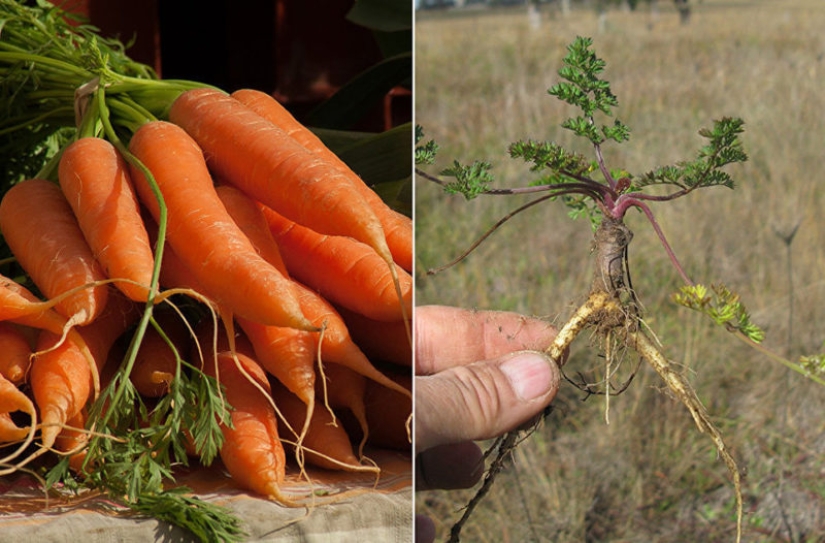 Using DNA, geneticists have found the historical roots of many popular plants. Unexpected results showed that some of the "ancestors" of modern fruits and vegetables still grow in the wild.
Using DNA, geneticists have found the historical roots of many popular plants. Unexpected results showed that some of the "ancestors" of modern fruits and vegetables still grow in the wild.
The ancient predecessor of the Queen of fields – teosinte has little in common with popular culture. It is unknown what motivated primitive people to pay attention to such a nondescript plant 9 years ago. Teosinte still grows wild in the South American continent. Genetics, compared the DNA of teosinte modern corn ancient corn cob, which was discovered during excavations in Mexico.
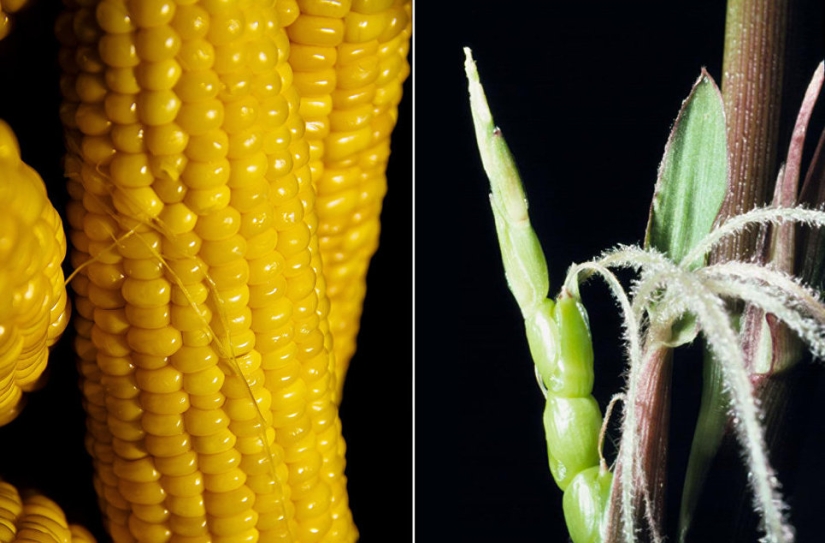
The age of the finds of archaeologists has 5310 years. In its structure the discovered ear is closer to the wild mind teosinte than to the Queen of the fields. He looks very similar to modern corn, only the length of the cob was only two centimeters. The leaves were protecting the yellow grains, which were attached to the Central part.
How popular agricultural plants has little in common with the known corn. He has no ears, long stems crowned with spikes with small granules. However, DNA analysis confirmed that teosinte ancestor of modern maize. Culture change was gradual, which is characteristic of selective breeding.
In 2014, historians and biologists made the discovery by studying the painting by the artist Giovanni Machines Dating back to the seventeenth century. Attention was drawn to the watermelon, which looked pretty strange. Berry had a very thick crust. Large bone occupied almost the entire interior of the berries. The fruit almost do not contain the usual red flesh. At first glance it seemed inedible. But the artist knowingly portrayed it next to juicy peaches, pears, apples.
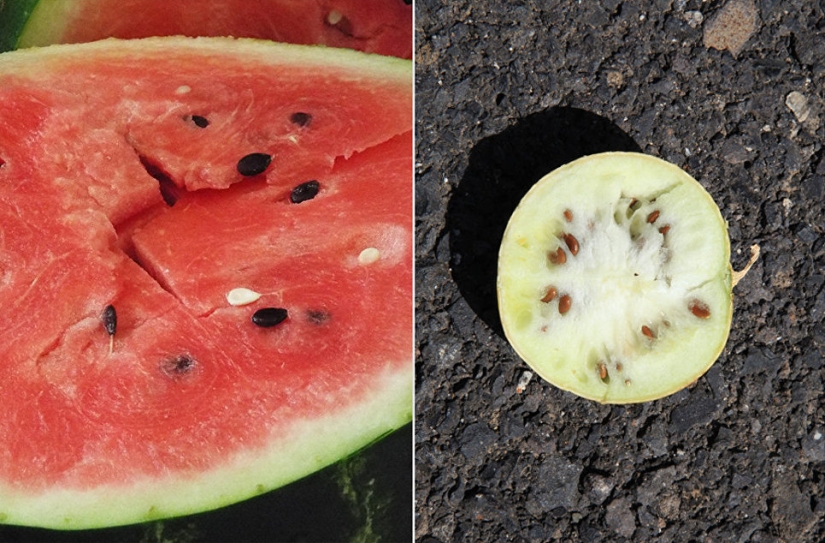
In the XVII century, the watermelon looked like this. Its historical ancestor – melon tsamma still found in the African Kalahari desert. Externally, this striped berry, hard and bitter. Its size does not exceed five inches in diameter. Modern watermelon contains three times more sugar than far predecessor. But African melon contains fat and starch.
Examining the DNA Tammy and watermelon, geneticists have found that these berries relatives. The history of the modern watermelon has four thousand years. Innovators cultivation of wild berries was supposedly the ancient Egyptians. Ancient seeds of watermelons are often found in ancient Egyptian graves.
His contemporaries never recognized the tomatoes, seeing a bunch of red berries on the grassy shrub. A few thousand years ago wild tomatoes were the size of a currant. The cultivation of tomatoes is attributed to South American Indians. Breeders-pioneers relied on the fruit size.
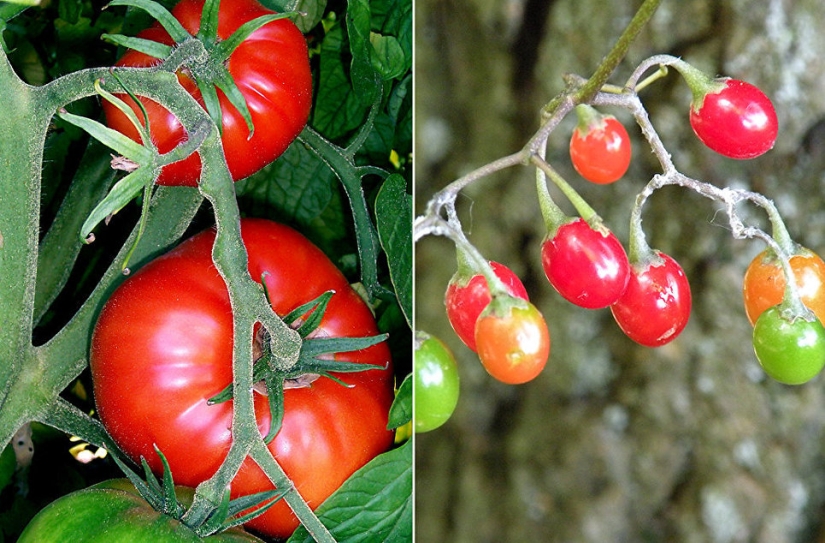
The domestication of tomato was possible due to gene mutation CSR, which is responsible for fruit size, to protect them from drought. Genetics, found the mutated gene in the cultural, semi-wild and wild plants. Almost all modern varieties of tomatoes have this mutation.
The domestication of wild plants has affected the taste of the fruit – it has become neutral. Light acidity – a faint echo of the taste of wild berries. A side effect of gene mutation CSR made a big and juicy fruit is tasteless.
The inhabitants of Central Asia, the Middle East, began to grow carrots a few years ago. In the course were only sweet seeds. Then these plants were thin root vegetable blue color, bitter taste and disgusting smell. It was used in food only in the first centuries of our era. Familiar to us a bright orange root vegetable appeared only in the XVII century.
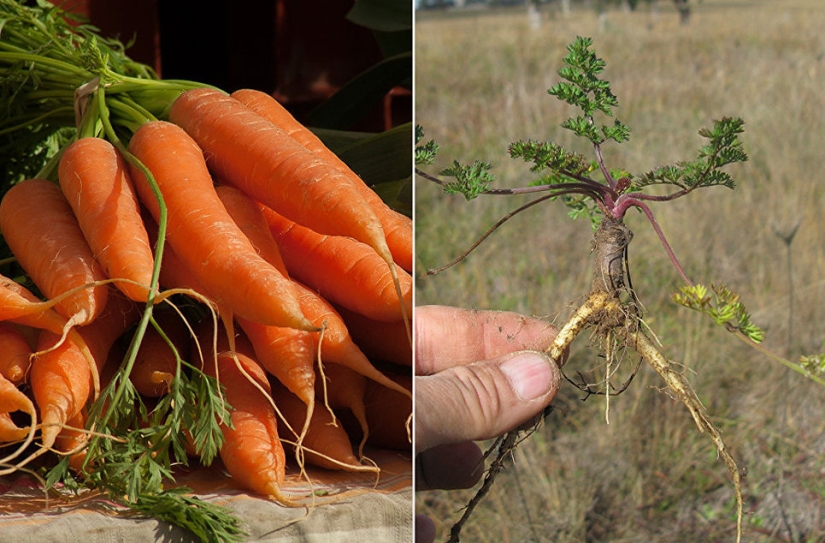
Some researchers attribute the innovation of the Dutch breeders patriots who are very impressed by the root vegetable of the same color with the national flag. Others cite competition of cooks of centuries past. Orange carrot as opposed to the blue roots, gives delicious Golden hue instead of the unattractive brown color. Whatever it was, but the breeders have focused on orange carrots and not lost.
American researchers have found that the orange pigments (carotenoids) are responsible for the content of carotene. So beautiful, tasty carrot is very useful. Carotenoids serve as the metabolic basis of vitamin A, the lack of which affects the visual acuity.
The only drawback cultivated banana is a complete lack of seeds. "Domesticated" plant in contrast to the wild ancestor is not able to proliferate. Farmers are forced to use the vegetative method. They get new plants using cuttings, which are cut from adult specimens.
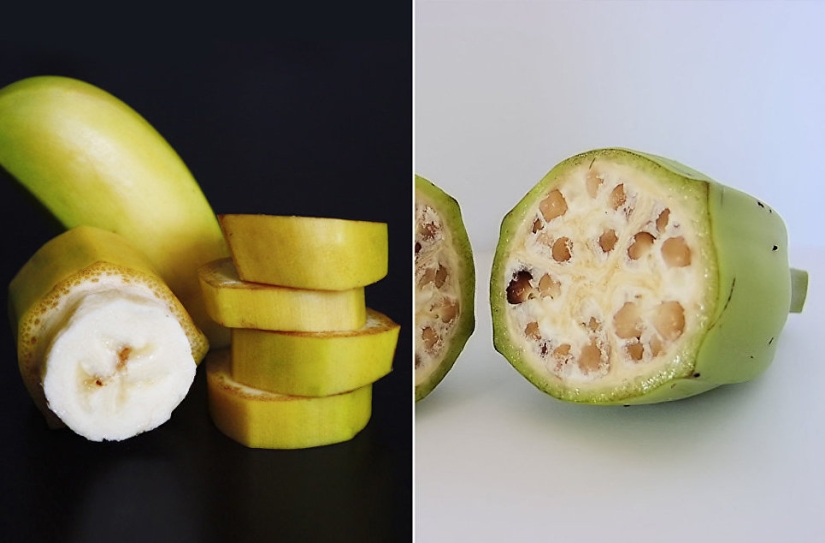
An alleged predecessor of the cultivated banana – Musa acuminate, which still grows in the wild in South-East Asia. The plant is propagated by seeds, as the pulp of each fruit contains not less than fifty large black seeds. Barely visible dark dots in the white core of the cultivated bananas is a hint of those seeds of wild plants.
The bananas that we buy in supermarkets, twice as big as the fruit of the wild. Cultivated plants have lost immunity to various parasites, infections. Almost half (47%) edible cultivars originated from a group of Cavendish. The lack of resistance to pests – a result of genetic uniformity. "Domesticated" bananas do not have time to adapt to a fast-mutating pests.
Australian genetics solved the problem with transplanting the genes of wild ancestors of cultivated descendants. The testers managed to grow a few instances of semi-wild plants in which there is a high resistance to harmful fungi; Panama disease.
Keywords: Vegetables | Ancestors | Flora | Fruit
Post News ArticleRecent articles

The calendar says that summer is coming soon. And with it-vacation, sea, cocktails and all that. But the closer the arrival of the ...

Scientists at the University of Birmingham have proven that music is a great helper in increasing productivity and concentration, ...
Related articles

Do you like to cook, buy food for the future, but the short life of vegetables and fruits does not give you peace of mind? There is ...

Step into a world where haute couture meets the everyday kitchen pantry. Introducing "Edible Elegance," a captivating collection of ...

Our energy is directly related to the foods we eat. The products we choose to saturate the body can either boost our vital energy, ...

First, it is beautiful. Secondly, it is really fascinating. These sifco just cut different objects, but looking at these, you may ...